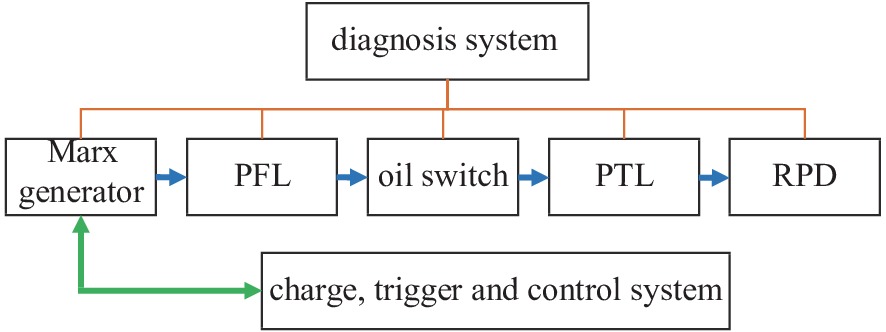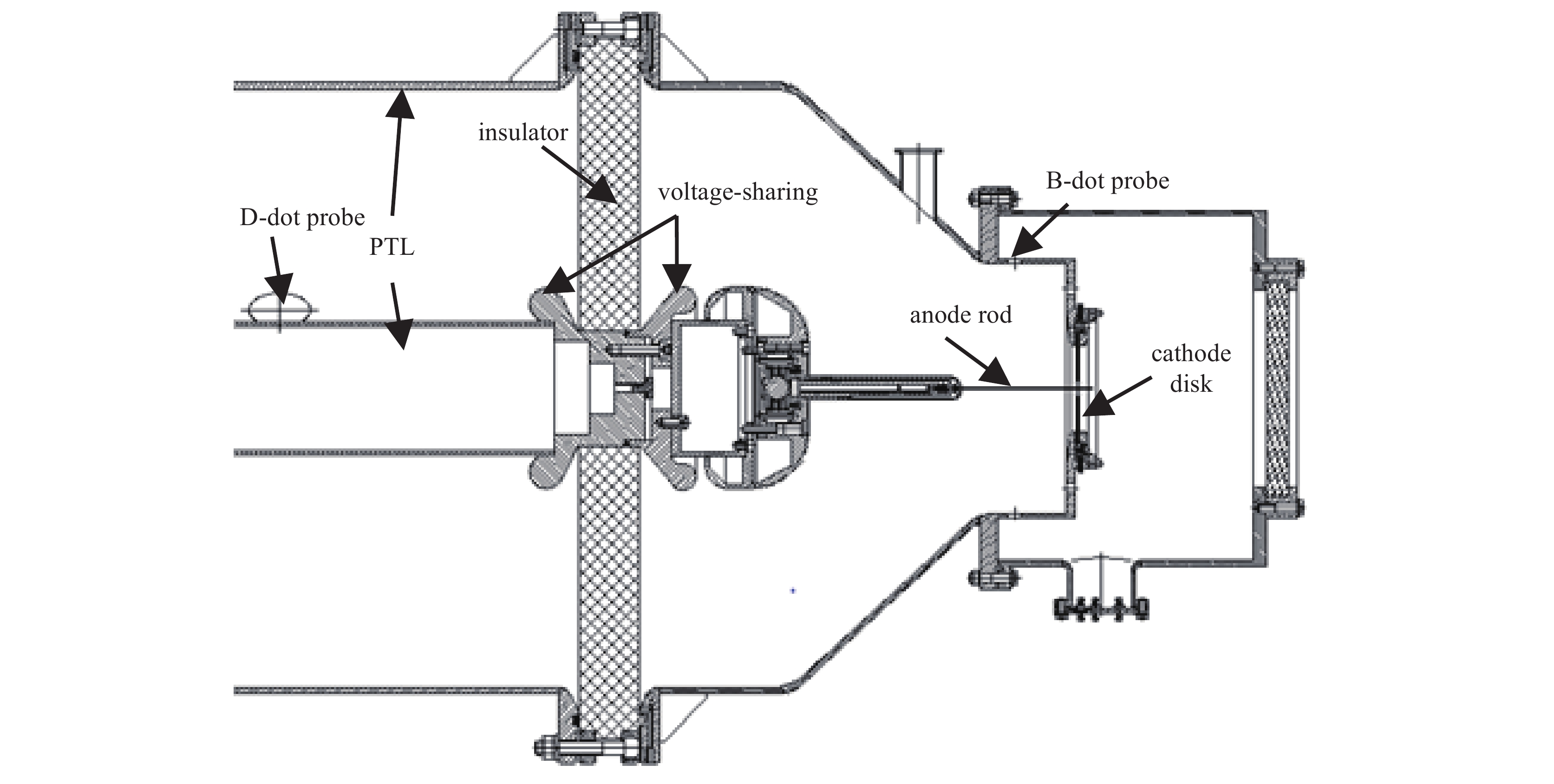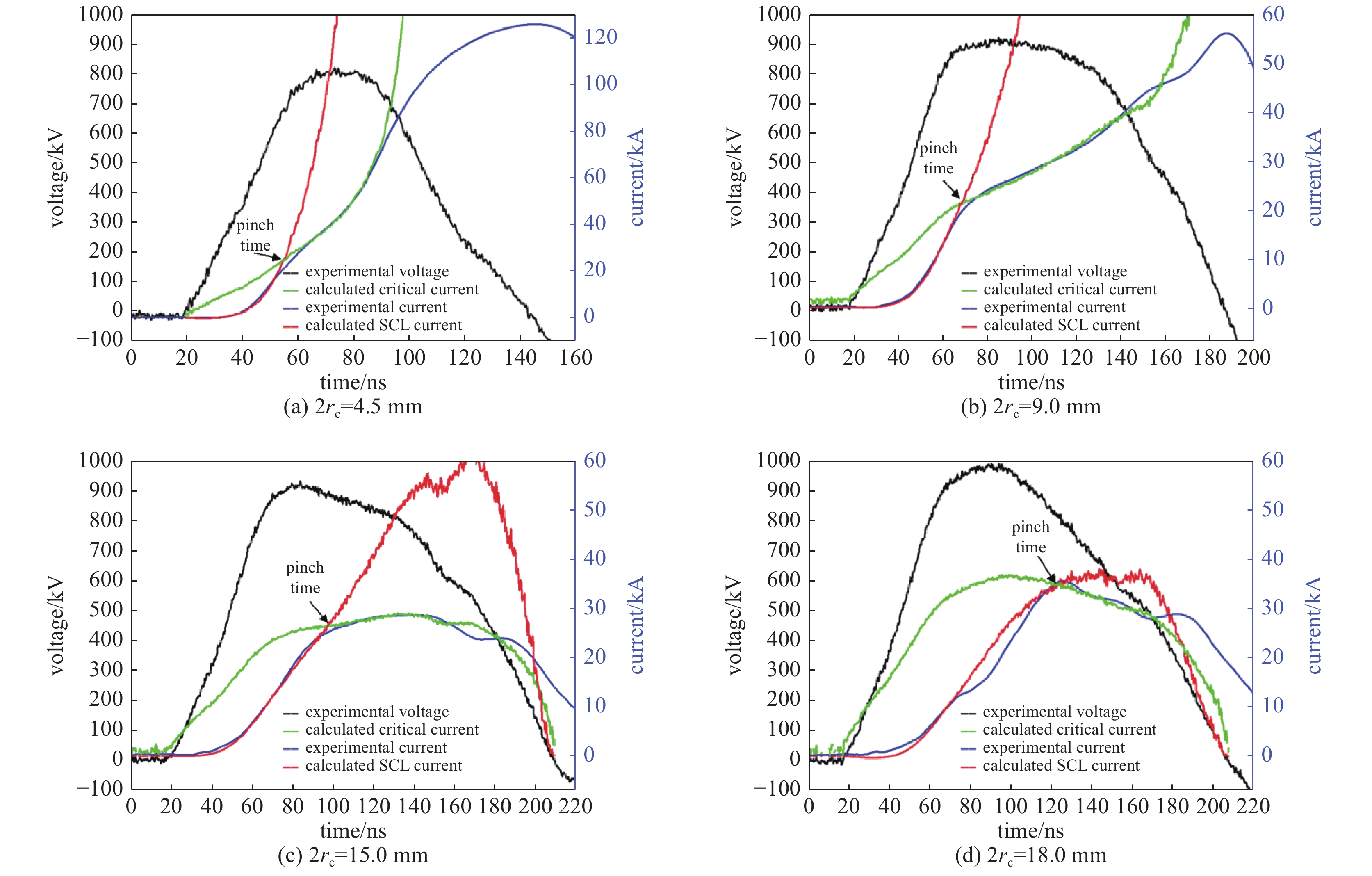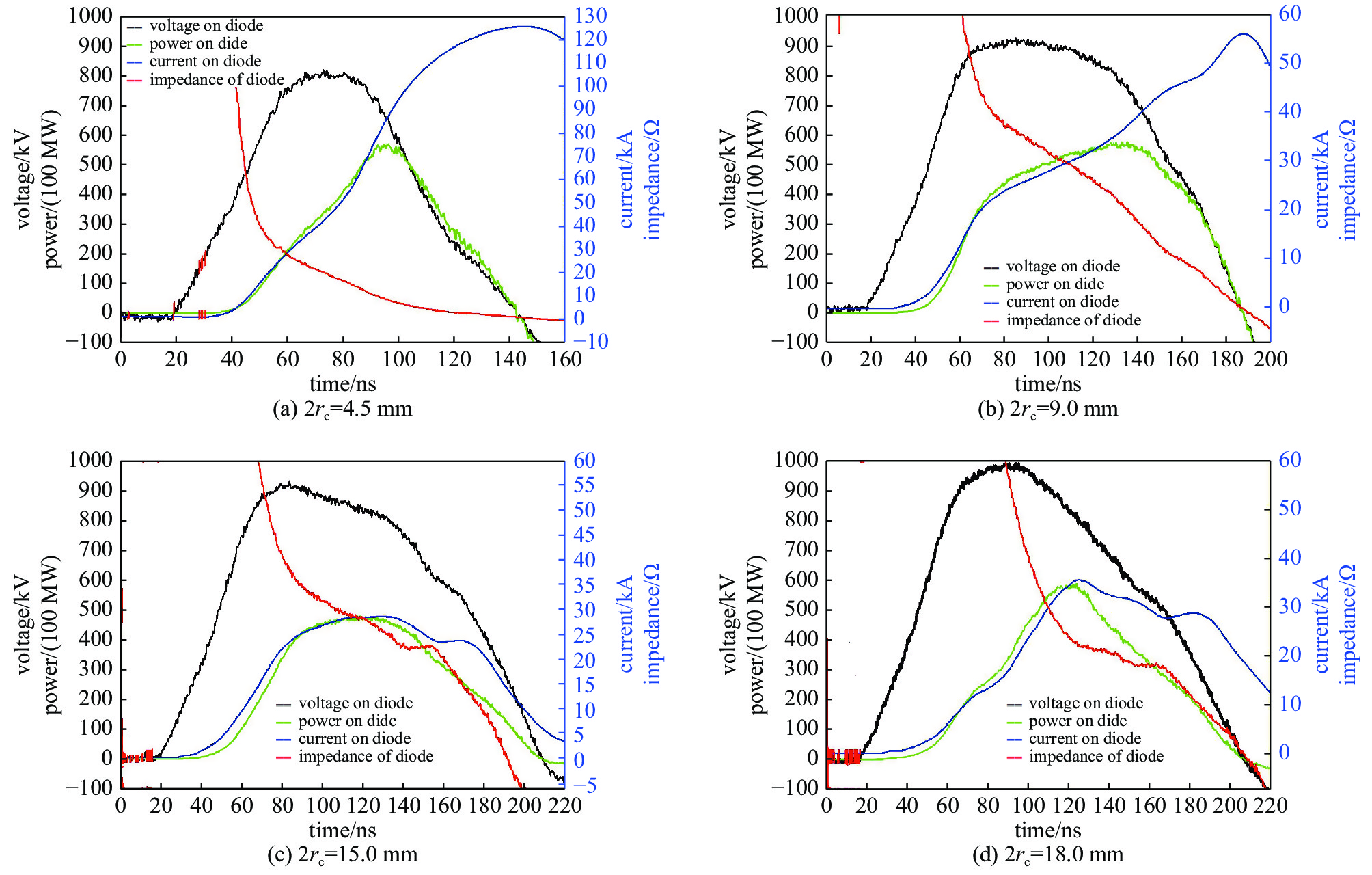Experiment and analysis on mathematical model of 1 MV rod pinch diode
-
摘要: 阳极杆箍缩二极管(RPD)具有小焦斑、高亮度的特点,是闪光X光机领域的研究热点。基于Marx发生器和脉冲形成线技术路线产生1 MV高电压脉冲驱动RPD,开展了不同结构参数二极管实验研究。基于RPD物理过程的数值模型,分析了结构参数对箍缩物理过程的影响。研究表明在1 MV电压下,RPD阴极等离子体平均扩散速度、阳极等离子体平均扩散速度分别为2,0.6 cm/μs时,该模型可以较好地描述实验结果。在阳极杆直径一定的情况下,二极管数值模型表明减小阴极孔径可以使二极管更快进入强箍缩状态,但过小的阴极孔径会导致二极管间隙过早闭合。Abstract: Rod pinch diode (RPD) has the characteristics of small focal spot and high brightness, which is a research hotspot in the field of flash radiography. In this paper, based on the Marx generator and pulse forming line technology route, 1 MV high voltage pulse driving RPD is generated, and the experimental research of diode with different structure parameters is carried out. Based on the numerical model of RPD physical process, the ratio of cathode to anode aperture is a complex variable related to the average diffusion velocity of cathode and anode plasma, which is also the main parameter affecting the radiation performance of RPD. The results show that the average diffusion velocity of RPD anode plasma is about 0.6 cm/μs at 1 MV voltage. When the anode rod diameter is fixed, the diode numerical model shows that reducing the cathode aperture can make the diode enter the strong pinch state faster, but too small cathode aperture will lead to premature closure of the diode gap.
-
Key words:
- flash radiography /
- flash X-ray generator /
- rod pinch diode /
- numerical model
-
表 1 实验结果
Table 1. Results of experiments
type 2rc/mm 2ra/mm Lrod/mm pinch time/ns pulse width of Vd/ns coupling energy/kJ dose@1 m/R a 4.5 1.5 10 35 120 2.75 0.83 b 9.0 1.5 10 50 160 2.85 0.93 c 15.0 1.5 10 80 190 3.15 0.98 d 19.0 1.5 10 105 190 2.52 0.79 -
[1] Maenchen J, Cooperstein G, O’Malley J, et al. Advances in pulsed power-driven radiography systems[J]. Proceedings of the IEEE, 2004, 92(7): 1021-1042. doi: 10.1109/JPROC.2004.829056 [2] Ma Xun, Deng Jianjun, Liu Hongwei, et al. Development of all-solid-state flash X-ray generator with photo conductive semiconductor switches[J]. Review of Scientific Instruments, 2014, 85: 093307. doi: 10.1063/1.4895829 [3] Goldsack T J, Bryant T F, Beech P F, et al. Multimegavolt multiaxis high-resolution flash X-ray source development for a new hydrodynamics research facility at AWE Aldermaston[J]. IEEE Transactions on Plasma Science, 2002, 30(1): 239-253. doi: 10.1109/TPS.2002.1003866 [4] 袁建强, 刘宏伟, 马勋, 等. 基于光导开关的固态脉冲功率源及其应用[J]. 高电压技术, 2015, 41(6):1807-1817. (Yuan Jianqiang, Liu Hongwei, Ma Xun, et al. Development and application of solid state pulsed power generators based on photoconductive semiconductor switches[J]. High Voltage Engineering, 2015, 41(6): 1807-1817 [5] 孙凤举, 邱爱慈, 杨海亮, 等. 感应电压叠加器驱动阳极杆箍缩二极管型脉冲X射线源[J]. 强激光与粒子束, 2010, 22(4):936-940. (Sun Fengju, Qiu Aici, Yang Hailiang, et al. Pulsed X-ray source based on inductive voltage adder and rod pinch diode for radiography[J]. High Power Laser and Particle Beams, 2010, 22(4): 936-940 doi: 10.3788/HPLPB20102204.0936 [6] 陈林, 谢卫平, 邓建军. X射线闪光照相杆箍缩二极管技术最新进展[J]. 强激光与粒子束, 2006, 18(4):643-647. (Chen Lin, Xie Weiping, Deng Jianjun. Development of rod-pinch diode for flash X-ray radiography[J]. High Power Laser and Particle Beams, 2006, 18(4): 643-647 [7] Miller C L, Welch D R, Rose D V, et al. Detailed simulation of the CYGNUS rod pinch radiographic source[J]. IEEE Transactions on Plasma Science, 2010, 38(10): 2507-2513. doi: 10.1109/TPS.2010.2057448 [8] Kwan T J T, Berninger M, Snell C, et al. Simulation of the Cygnus rod-pinch diode using the radiographic chain model[J]. IEEE Transactions on Plasma Science, 2009, 37(4): 530-537. doi: 10.1109/TPS.2009.2014767 [9] 高屹, 邱爱慈, 吕敏, 等. Rod-pinch二极管箍缩特性的数值模拟[J]. 核技术, 2010, 33(8):575-579. (Gao Yi, Qiu Aici, Lv Min, et al. Numerical simulations of beam-pinching characteristics in a rod-pinch diode[J]. Nuclear Techniques, 2010, 33(8): 575-579 [10] Rose D V, Welch D R, Oliver B V, et al. Coupled particle-in-cell and Monte Carlo transport modeling of intense radiographic sources[J]. Journal of Applied Physics, 2002, 91(5): 3328-3335. doi: 10.1063/1.1448868 [11] Cooperstein G, Boller J R, Commisso R J, et al. Theoretical modeling and experimental characterization of a rod-pinch diode[J]. Physics of Plasmas, 2001, 8(10): 4618-4636. doi: 10.1063/1.1403016 [12] Neira E, Vega F. Solution for the space-charge-limited current in coaxial vacuum diodes[J]. Physics of Plasmas, 2017, 24: 052117. doi: 10.1063/1.4983328 [13] Greenwood A D, Hammond J F, Zhang P, et al. On relativistic space charge limited current in planar, cylindrical, and spherical diodes[J]. Physics of Plasmas, 2016, 23: 072101. doi: 10.1063/1.4954827 [14] Oliver B V, Genoni T C, Rose D V, et al. The impedance characteristics of a rod-pinch diode[C]//PPPS-2001 Pulsed Power Plasma Science 2001. 28th IEEE International Conference on Plasma Science and 13th IEEE International Pulsed Power Conference. Digest of Papers. 2001: 458-461. [15] Oliver B V, Ottinger P F, Genoni T C, et al. Magnetically insulated electron flow with ions with application to the rod-pinch diode[J]. Physics of Plasmas, 2004, 11(8): 3976-3991. doi: 10.1063/1.1771659 -




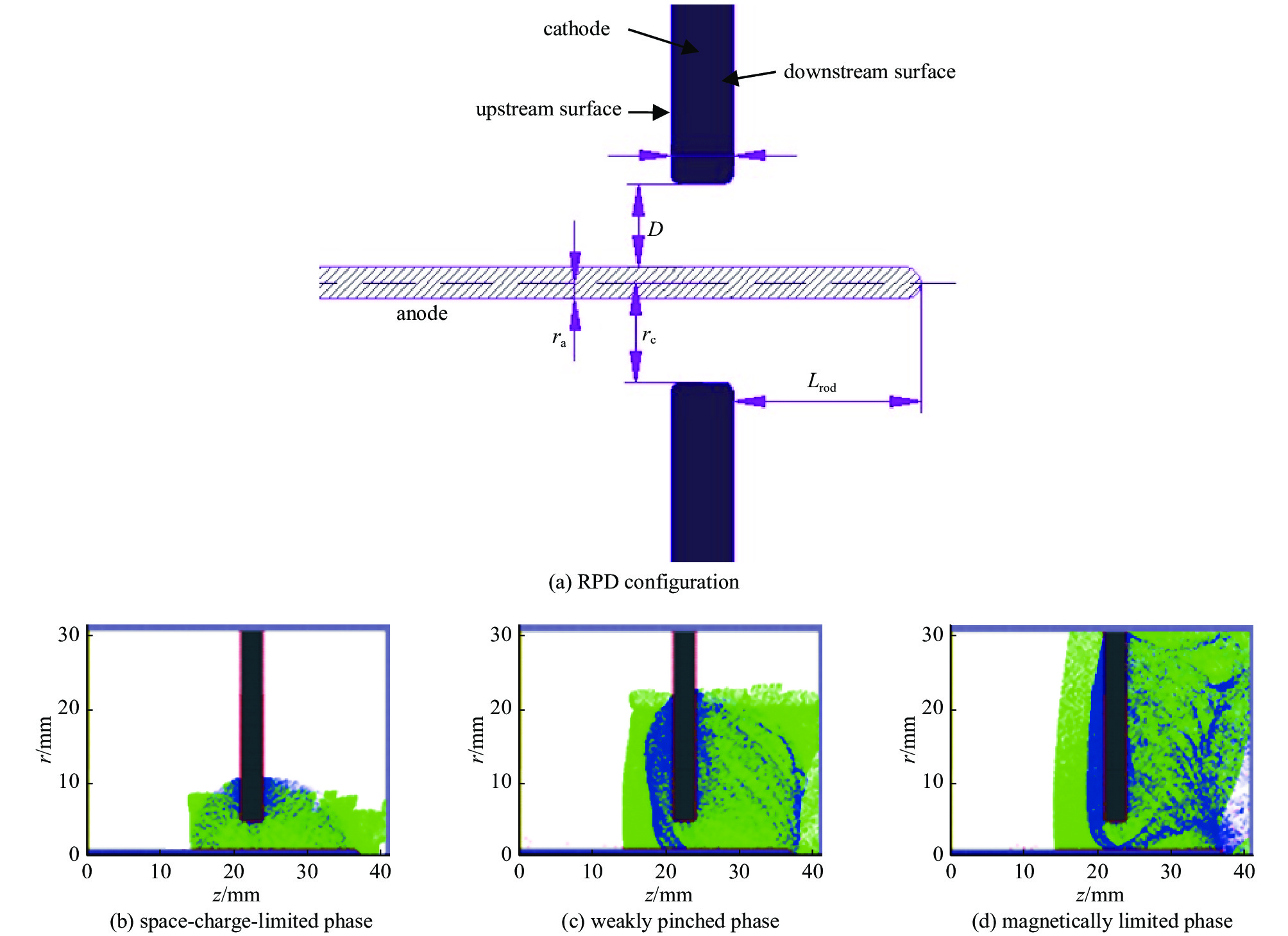
 下载:
下载:
